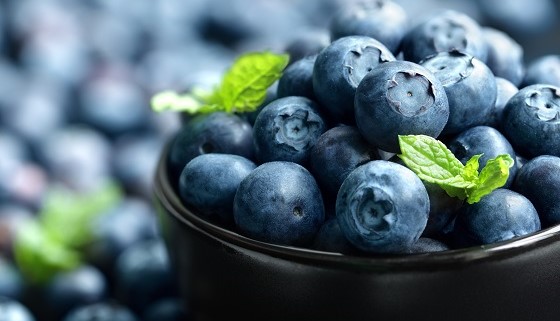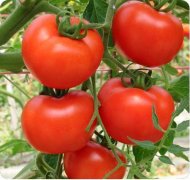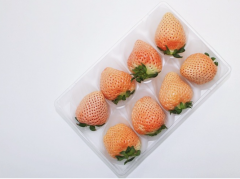Blueberry planting technology: how to do blueberry iron deficiency? Ways to improve the sustainability of iron deficiency in blueberries
Blueberry cultivation, there is a problem is more difficult to solve, that is iron deficiency, to improve the sustainability of blueberry iron deficiency, do you want to know? Let's take a look at it together.
Blueberry (Blueberry) originated from North America, and its fruit is rich in anthocyanins (anthocyanidin) and other antioxidants. It is a well-known nutritious food and is suitable for planting in areas with high rainfall. The soil in these areas is acidic, and the pH value is about 4.5-5.5. If blueberries are planted in areas with less rainfall and alkaline soil, it is difficult for plants to use iron in the soil, which is easy to cause symptoms of iron deficiency, which may lead to yellowing of leaves, limited growth or reduced yield.
Ferrous ions are required to synthesize anthocyanins, so the lack of iron may affect the efficiency of anthocyanin synthesis in blueberries. Traditionally, farmers will add an appropriate amount of sulfur to alkaline soil to help soil acidification and promote the solubility of iron in the soil, but hastily changing the acidity and basicity of soil in a man-made way will affect the changes of microbial populations that already exist in the soil and increase greenhouse gas emissions; if additional iron chelating agents are added, it may lead to groundwater or river pollution.
Previous studies have shown that mugineic acid family phytosiderophores secreted by the roots of Monocotyledons has the function of chelating iron ions, which may be used in field intercropping with blueberry plants to improve the iron availability of blueberries in soil. The University of Chile (Universidad de Chile) intercropped blueberries of Emerald varieties with Gramineae plants and found that the fruits produced in the experiment not only increased the quantity and weight, but also increased the content of anthocyanins and other antioxidants, the effect is the same as the use of Fe-EDDHA chelating agent.
Considering the increasing scarcity of natural resources, the adoption of sustainable farming methods is beneficial to prolong the use period of land resources, and intercropping is one of the options. The relevant experimental results can be used as a reference for blueberry field managers.

- Prev

In order to improve the flavor of tomato, the original flavor of tomato can be found by pan-genome research.
Tomato is a vegetable that exists all the year round, and we often eat this kind of vegetable. Have you noticed that the taste of tomato is very different from that of tomato 20 years ago? today's tomato tastes light and its acidity and sweetness are not very obvious. it's also like today's tomatoes.
- Next

Introduction of Japanese strawberry varieties, characteristics of strawberry varieties of light snow / Ganwang / red cheek / Tochigi girl
Strawberry, this kind of fruit is a kind of fruit that we usually see, there are more strawberry varieties, such as the new variety Lianxiang strawberry, do you know these popular varieties in Japan? Light snow this is a kind of white strawberry, which is found in Japan
Related
- The first cup of black tea in spring, the flavor and history of tea gardens in Kenya, Africa
- The computer can not only choose potatoes, but also grow tea rice. AI will grow winter oolong tea champion.
- It is not only the inflated tea bitten by insects, but also engraved with the four seasons tea in Beipu.
- The Oriental Beauty Tea Festival in Zhuxian County takes the stage at the weekend to experience the plus-size feast of oil tea.
- & quot; Oriental Beauty Tea & Exploration of Emei in Hsinchu, the hometown of quot;
- The new variety of strawberry "Tainong 1" dessert is the first choice with mellow aroma. Crimson gorgeous
- History of Tea in Taiwan: from Wild Inner Mountain to Export Tea Garden
- Two types of Taiwan Oriental Beauty Black Tea won the British three-Star Award for Childhood Tea Xiang Zhang Jiaqi changed from pilot to champion tea maker.
- Banana species and varieties: the planting history of Taiwan Xianren banana and dwarf banana is long, is banana disease resistant?
- Coffee planting Technology: Qianjie Coffee from Seedling to harvesting

